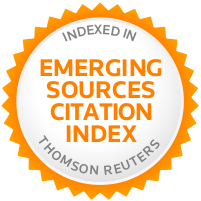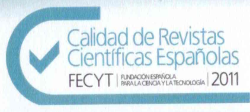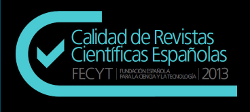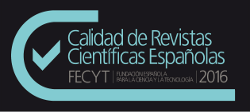All the contributions must follow this style sheet based on the MLA guidelines; authors will be required to adapt the format of their articles if they have not done so beforehand.
GENERAL GUIDELINES
- Page size: A4
- Margins: 2,5 cm for all the margins
- Font: Times New Roman 11 throughout the whole text (including title, subtitles, notes, quotations, etc.)
- Bold and underlined types should be avoided, use italics instead.
- Only one space should be left after periods or other punctuation marks.
- The first line of each paragraph should be indented 1.25 cm from the left margin.
- The heading of the article must follow the following format:
Heading:
TRADUCCIÓN VS. MODERNIDAD: DEL PERÍODO CLÁSICO DE LA ESCUELA DE PRAGA A LA TRADUCTOLOGÍA DE LAS ÚLTIMAS DÉCADAS DEL SIGLO XX
Subheading:
Tradition vs. Modernity: from the Classical Period of the Prague School to the Translation Studies of the Final Decades of the 20 Century
Author:
Jana KRÁLOVÁ
Instituto de Traductología,
Facultad de Filosofía y Letras, Universidad Carolina, Praga
- Please stick to this style and avoid any other setter types, fonts and size in order to make the text format as simple as possible.
- Line spacing: single
- Please do not include headers, footers or page number.
- FOOTNOTES are preferred to ENDNOTES.
QUOTATIONS
- Short quotations (up to 40 words) should be incorporated into the text, using inverted commas (“ ”).
- Longer quotations should be indented without quotation marks and no italics. When referring to the works of others in your paper, use parenthetical citation, that is immediately following a quotation from a source or a paraphrase of a source’s ideas, you place the author’s name followed by a space, the year of publication and the relevant page number(s). Example:
(…) meaning is partly shaped by come specific syntactical, grammatical or rhetorical features, constituting the concrete content to be conveyed (Bondarko 1984:2). - If the author’s name is used in the text of the paper, there is no need to repeat it in the citation. Example:
(…) according to Highet (1949:36), this was not a unidirectional process…
BIBLIOGRAPHY
- A list of bibliographical references should be provided at the end of the paper under the heading “References”.
Basic rules
- Capitalize each word in the titles of articles, books, etc, but do not capitalize articles, short prepositions, or conjunctions unless one is the first word of the title or subtitle. Example:
Gone with the Wind, The Art of War, There Is Nothing Left to Lose - Use italics for titles of larger works (books, magazines) and quotation marks for titles of shorter works (poems, articles)
- If you have cited more than one work by a particular author, order the entries alphabetically by title, and use three hyphens in place of the author’s name for every entry after the first. Example:
Burke, Kenneth. A Grammar of Motives.
—. A Rhetoric of Motives. - When an author or collection editor appears both as the sole author of a text and as the first author of a group, list solo-author entries first. Example:
Heller, Steven, ed. The Education of an E-Designer. Oxford: Oxford University Press, 2004.
Heller, Steven and Karen Pomeroy. Design Literacy: Understanding Graphic Design. Oxford: Oxford University Press, 2002. - When the work you are citing has no known author, alphabetize the work by their title and use a shortened version of the title in the parenthetical citations in your paper. Example:
Baudrillard, Jean. Simulacra and Simulations.
Boring Postcards USA
Burke, Kenneth. A Rhetoric of Motives.
Citing books
- Books with one author:
Author’s surname, full name. Title of the Book. Place of publication: Publisher, year of publication. Example:Swales, John. Genre Analysis: English in Academic and Research Settings. Cambridge: Cambridge University Press, 1990. - Books with more than one author:
First author’s surname, full name, and second author’s full name surname. Title of the Book. Place of publication: Publisher, year of publication. Example:Gillespie, Paula, and Neal Lerner. The Allyn and Bacon Guide to Peer Tutoring. Boston: Allyn, 2000. - Books with more than two authors:
First author’s surname, full name, et al. Title of the Book. Place of publication: Publisher, year of publication. Example:Wysocki, Anne, et al. Writing New Media: Theory and Applications for Expanding the Teaching of Composition. Logan, UT: Utah State UP, 2004. - Anthologies or collections (edited books):
Author’s surname, full name, ed(s). Title of the Book. Place of publication: Publisher, year of publication. Example:Grazia, Magreta de, and Stanley Wells, eds. The Cambridge Companion to Shakespeare. Cambridge: Cambridge University Press, 2001. - Book sections:
Author’s surname, full name. “Title of the Book Section”. Title of the Book. Ed. Editor’s name. Place of publication: Publisher, year of publication. Pages. Example:Harris, Muriel. “Talk to Me: Engaging Reluctant Writers.” A Tutor’s Guide: Helping Writers One to One. Ed. Ben Rafoth. Portsmouth, NH: Heinemann, 2000.24-34.
Citing Journals and Periodicals
- Articles in a magazine or newspaper:
Author’s surname, full name. “Title of the Article.” Title of the Periodical Day Month Year: pages. Example:Poniewozik, James. “TV Makes a Too-Close Call.” Time 20 Nov. 2000: 70-71. - Articles in a scholarly journal:
Author’s surname, full name. “Title of Article.” Title of Journal Volume. Issue (Year): pages. Example:Bagchi, Alaknanda. “Conflicting Nationalisms: The Voice of the Subaltern in Mahasweta Devi’s Bashai Tudu.” Tulsa Studies in Women’s Literature 15.1 (1996): 41-50. - Anonymous articles:
«Title of the Article.» Title of the Periodical Day Month Year: pages. Example:«Business: Global Warming’s Boom Town; Tourism in Greenland.” The Economist 26 May 2007:82.
Citing Electronic Sources
- An entire web site:
Name of Site. Date of Posting/Revision. Name of institution/organization affiliated with the site (sometimes found in copyright statements). Date you accessed the site. Example: The Purdue OWL Family of Sites. 26 Aug.2005. The Writing Lab and OWL at Purdue University. 23 April 2006 <http://owl.english.purdue.edu>. - A page on a web site:
Author’s surname, full name. “Title of page or article.” Name of Site. Date of Posting/Revision. Name of institution/organization affiliated with the site. Date you accessed the site. Example: Stolley, Karl. “MLA Formatting and Style Guide.” The Owl at Pardue. 10 May 2006. Purdue University Writing Lab. 12 May 2006 <http://owl.english.purdue.edu/owl/resource/557/01/>. - An article in a web magazine:
Author’s surname, full name. “Title of Article.» Title of Online Publication. Date of Publication. Date of Access. Example: Bernstein, Mark. “10 Tips on Writing the Living Web.” A List Apart: For People Who Make Websites. Nº 149 (16 Aug.2002). 4 May 2006 <http://alistapart.com/articles/writeliving>. - An article in an online scholarly journal:
Author’s surname, full name. “Title of Article.” Title of Online Scholarly Journal. Volume. Issue (Date of Publication): pages. Date of Access. Example: Wheelis, Mark. “Investigating Disease Outbreaks under a Protocol to the Biological and Toxin Weapons Convention.” Emerging Infectious Diseases 6.6 (2000): 33 pars. 8 May 2006 <http://www.cdc.gov/ncidod/eid/vol6no6/wheelis.htm >
FOOTNOTES AND ENDNOTES:
- Endnotes and footnotes can be used occasionally for evaluative bibliographic comments, explanatory notes or other brief additional helpful information that might be too digressive for the main text. Example:
1 See Blackmur, especially chapters three and four, for an insightful analysis of this trend.
2 On the problems related to repressed memory recovery, see Wollens pp.120-35; for a contrasting view, see Pyle. - The notes should be listed by consecutive superscript Arabic numbers and appear single-spaced in regular paragraph format (a new paragraph for each note).















